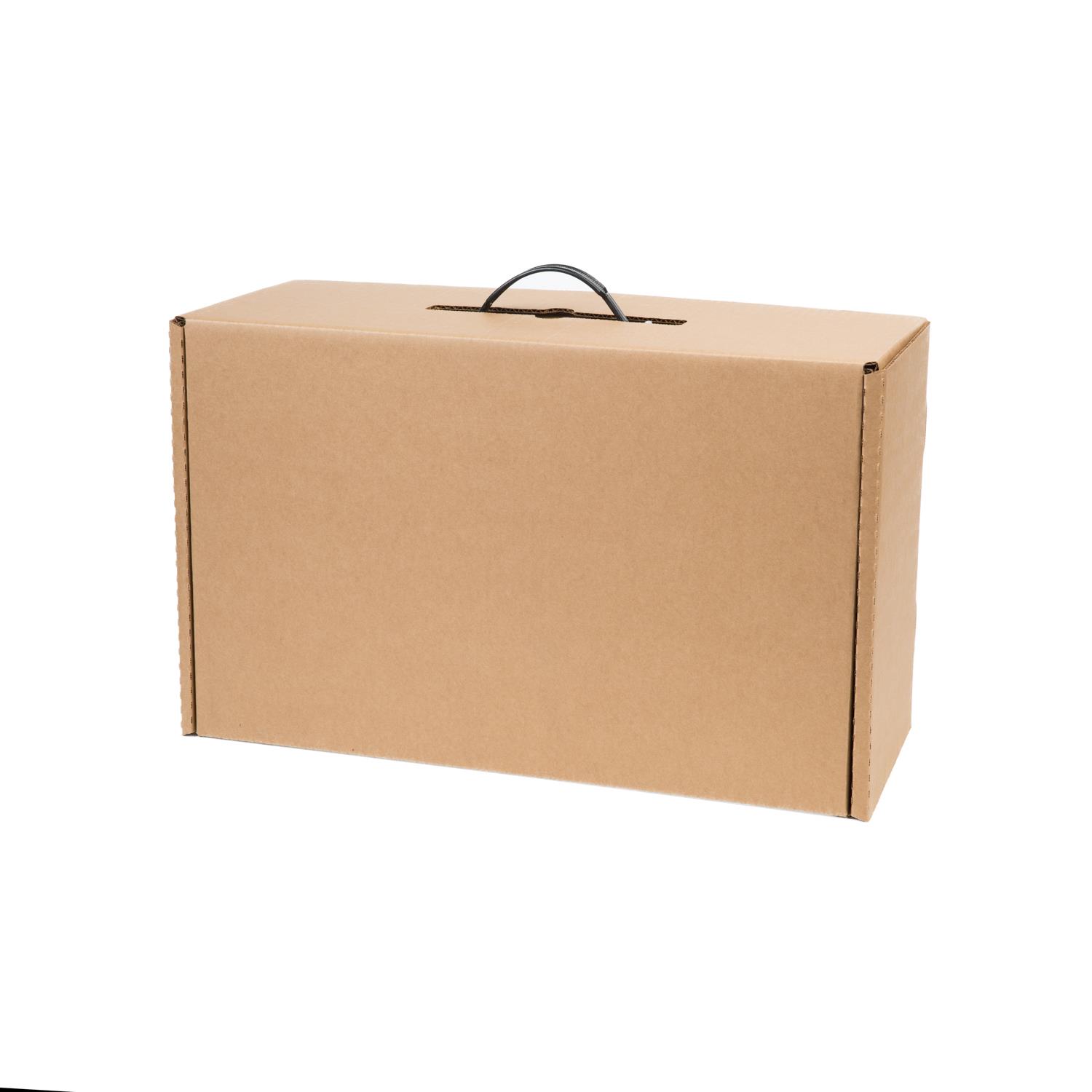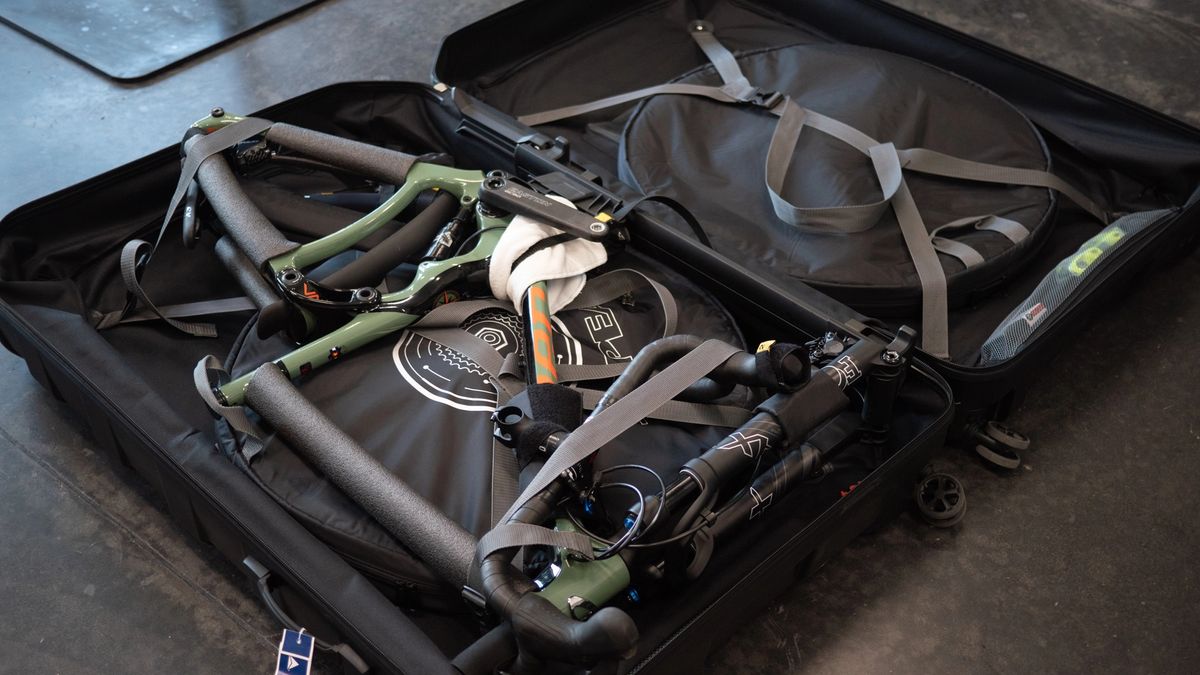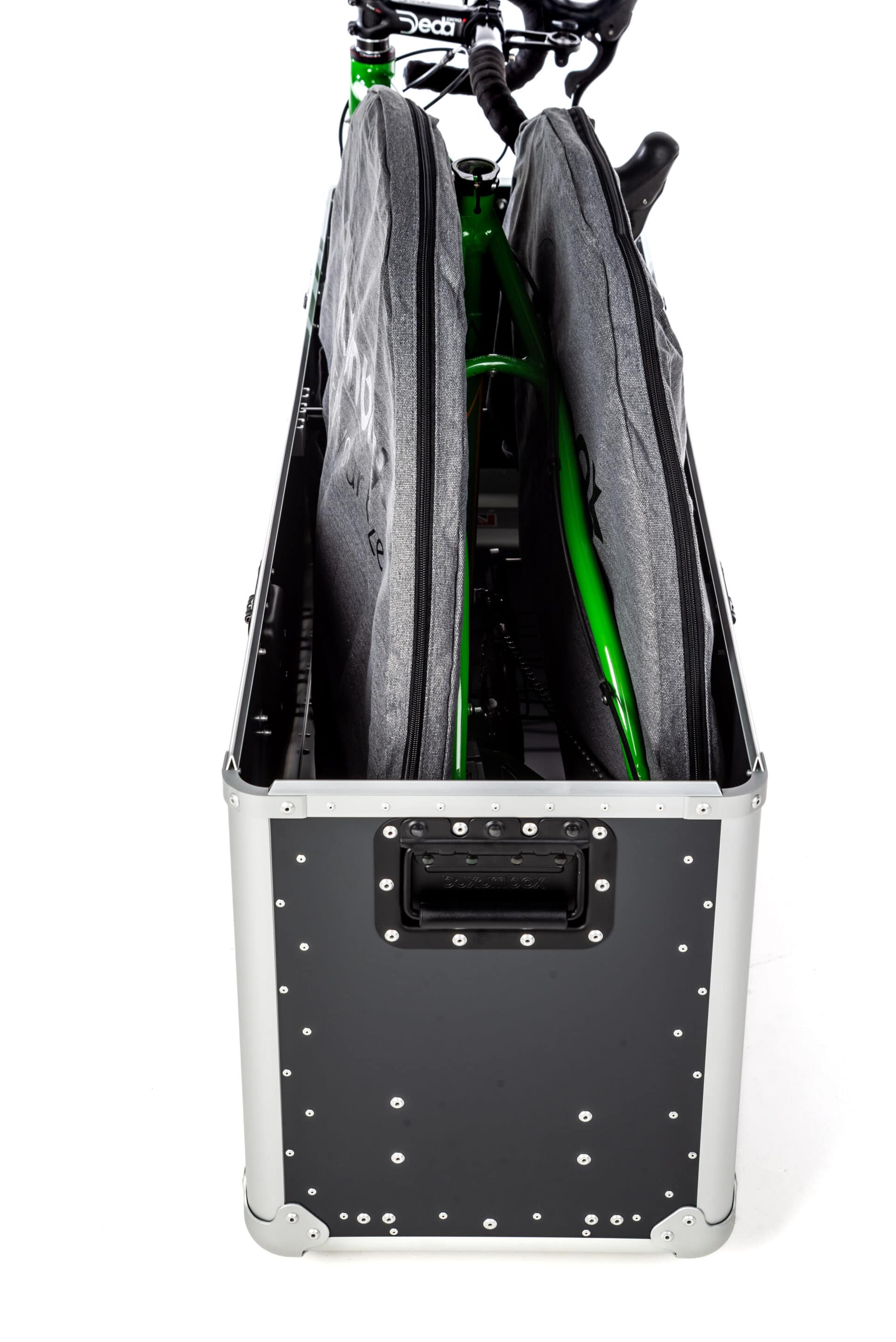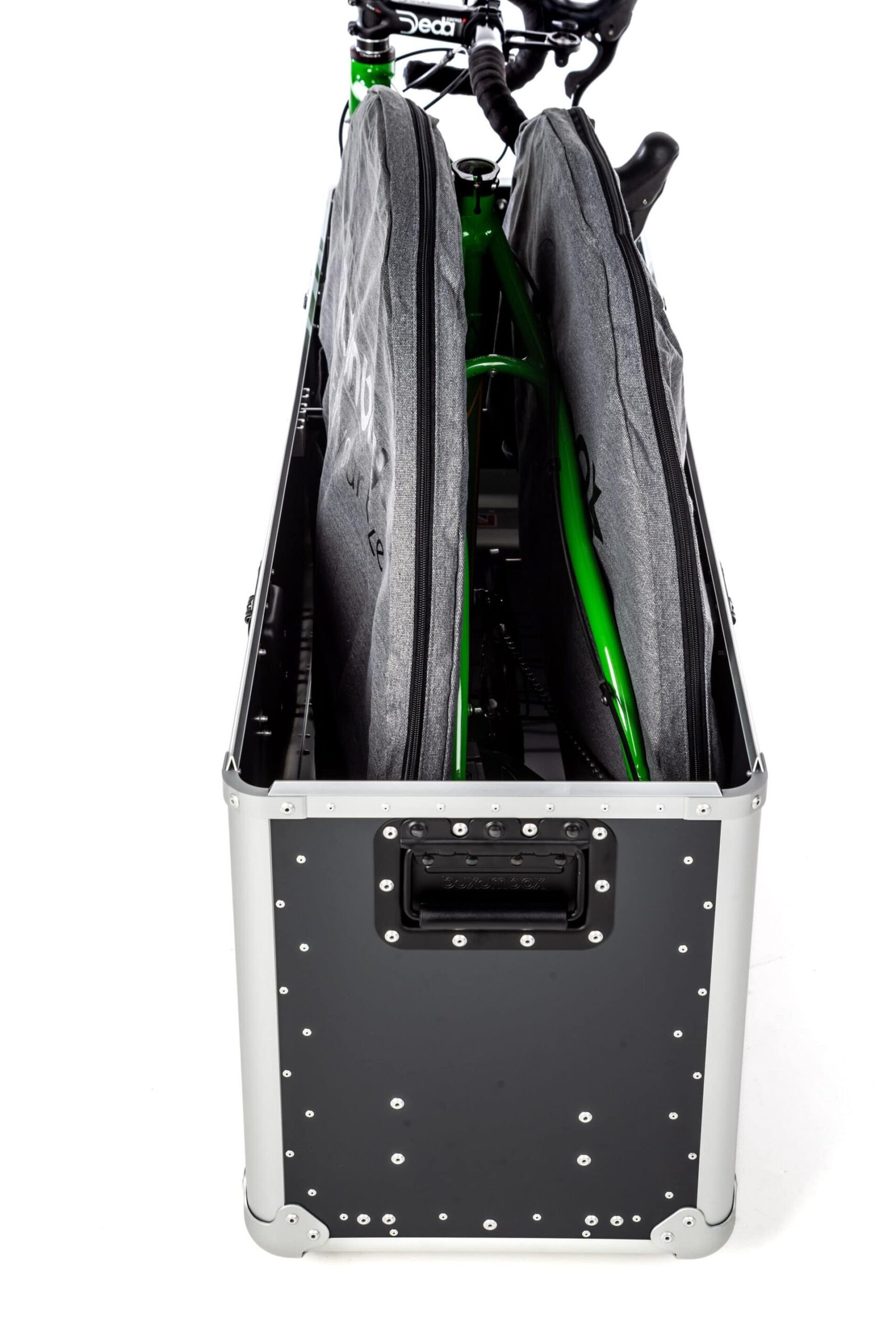When selecting a bike box, refer to a size/dimensions chart to ensure it meets airline requirements. Planning ahead will prevent any travel mishaps and ensure a stress-free journey with your bike.
Being aware of the dimensions needed for flying, shipping, or traveling will make your packing process smoother and more efficient. Properly sized bike boxes provide the necessary protection for your bike during transport, giving you peace of mind. Whether you are a casual rider or a professional cyclist, having the appropriate bike box dimensions can make all the difference in the success of your travel plans.
By understanding the specific requirements, you can choose the right size box to keep your bike safe and secure throughout your journey.
Understanding Bike Box Size/dimensions Chart: What You Need To Know
Learn everything you need to know about understanding the Bike Box Size/Dimensions Chart for flying, shipping, and travel. Get all the details on how to choose the right bike box size to ensure hassle-free transportation.
Understanding Bike Box Size/Dimensions Chart: What You Need to Know Why Bike Box Size Matters Choosing the right bike box size is crucial for flying, shipping, and travel. A properly sized box ensures your bike is well-protected and makes transportation hassle-free. Factors to Consider When Choosing a Bike Box 1. Size: Consider the dimensions of your bike to select a box that provides a snug fit without excess space. 2. Material: Look for sturdy, durable materials like corrugated cardboard or hard plastic to safeguard your bike during transit. 3. Weight: Ensure the box, with the bike inside, meets the weight restrictions for air travel or shipping. Benefits of Using the Correct Bike Box Size 1. Safety: The right box size prevents your bike from shifting or sustaining damage during transport. 2. Cost-Efficiency: Proper packaging reduces the risk of additional charges for oversized or overweight packages. 3. Convenience: A well-fitted box simplifies handling during shipping and air travel, making the process smoother for you and the transport personnel. By understanding the importance of bike box size, considering key factors, and recognizing the benefits of the correct size, you can ensure your bike arrives at its destination safe and sound.

Credit: www.uhaul.com
Flying With Your Bike: Recommended Box Sizes And Airlines’ Policies
Flying with your bike can be hassle-free by choosing the right box size. Consult the bike box size chart for flying, shipping, and travel to ensure the box meets airline policies for easy transportation. This ensures a smooth travel experience without any worries about the box being too large for your flight.
Common Bike Box Sizes For Air Travel
Bike box dimensions for air travel are crucial. Check with your airline for specific size requirements.
- Standard Bike Box Size: Typically 130cm x 80cm x 30cm
- Large Bike Box Size: Up to 160cm x 90cm x 40cm for bigger bikes
Airline Policies And Restrictions For Bike Boxes
Each airline has different rules. Be sure to review and comply with their specific regulations.
| Airline | Box Size Limit | Additional Fees |
|---|---|---|
| Delta Airlines | Maximum 115 inches (292 cm) | Varies based on destination |
| American Airlines | Maximum 126 inches (320 cm) | Additional charges may apply |
Tips For Flying With Your Bike
- Break Down Your Bike: Remove pedals, wheels, and handlebars to fit better.
- Protect Your Bike: Use padding and bubble wrap to prevent damage.
- Arrive Early: Allow extra time for check-in and transportation.
Shipping Your Bike: Choosing The Right Box Size And Shipping Options
In shipping your bike, choosing the right box size and shipping options is crucial for a smooth and stress-free process. By selecting the appropriate box size and shipping method, you can ensure your bike arrives safely and securely at its destination.
Standard Bike Box Sizes For Shipping
When preparing to ship your bike, it’s important to consider the standard box sizes available. Commonly used bike box dimensions include 44″ x 28″ x 9″, 53″ x 29″ x 8″, and 61″ x 30″ x 10″. Choosing a box size that fits your bike snugly can help prevent damage during transit.
Considerations For Shipping Your Bike
- Ensure the box is sturdy and provides adequate protection for your bike.
- Remove pedals, handlebars, and any protruding parts to avoid damage.
- Secure all loose parts and add padding to fragile components.
- Consider insuring your bike for added peace of mind.
Comparing Shipping Services And Costs
| Shipping Service | Estimated Cost |
|---|---|
| Standard Ground | $50 – $100 |
| Express Air Freight | $100 – $200 |
| Specialized Bike Shipping Companies | $150 – $300 |
Comparing shipping services and costs can help you choose the most suitable option based on your budget and timeline. Researching different providers and their services can ensure your bike is shipped efficiently and economically.

Credit: www.cyclingnews.com
Traveling With Your Bike: Bike Box Sizes And Transport Methods
Traveling with your bike can be a hassle without the proper equipment and knowledge. Understanding the different bike box sizes and transport methods can make the process smoother and more efficient. In this guide, we’ll explore the types of bike boxes for travel, recommend bike box sizes for different transport methods, and weigh the pros and cons of each bike box type.
Types Of Bike Boxes For Travel
When it comes to traveling with your bike, there are three main types of bike boxes to consider: hardshell bike cases, soft bike bags, and cardboard bike boxes. Each type offers its own set of advantages and disadvantages.
Bike Box Size Recommendations For Different Transport Methods
| Transport Method | Recommended Bike Box Size |
|---|---|
| Flying | Standard dimension: 45″ x 28″ x 10″ |
| Shipping | Varies based on shipping company’s requirements |
| Car/truck | Depends on the size of the vehicle |
Pros And Cons Of Different Bike Box Types
- Hardshell bike cases:
- Pros: Maximum protection, durable, ideal for frequent flyers
- Cons: Bulkier, heavier, pricier
- Soft bike bags:
- Pros: Lightweight, easy to store, affordable
- Cons: Less protection, may tear or puncture
- Cardboard bike boxes:
- Pros: Budget-friendly, recyclable, easy to dispose of
- Cons: Limited protection, not suitable for frequent use
Diy Bike Box: Creating Your Own Custom Box
DIY Bike Box: Creating Your Own Custom Box
When it comes to traveling with your bike, having a sturdy and reliable bike box is essential. While you can purchase pre-made bike boxes, sometimes they may not fit your bike properly, leaving it vulnerable to damage during transport. That’s why creating your own custom bike box can be a great option. Not only can you ensure a perfect fit, but also save some money in the process. In this guide, we’ll take you through the step-by-step process of building a DIY bike box, including the materials and tools you’ll need, as well as tips for safely packing your bike.
To build your own DIY bike box, you’ll need the following materials and tools:
- Cardboard: Strong and sturdy cardboard is the foundation of your bike box. Try to use double-walled corrugated cardboard for added durability.
- Box cutter or utility knife: This will help you cut through the cardboard with precision.
- Measuring tape or ruler: Accurate measurements ensure a proper fit for your bike.
- Marker or pen: You’ll need this to mark the cutting lines on the cardboard.
- Packing tape: This will be used to secure the edges and reinforce the box.
- Bubble wrap or foam padding: These materials will provide extra cushioning and protection for your bike.
- Zip ties or straps: These will help secure your bike inside the box.
Step-by-step Guide To Building A Diy Bike Box
Follow these steps to build your own custom bike box:
- Measure your bike: Begin by taking precise measurements of your bike, including its height, width, and length. These measurements will serve as the basis for the dimensions of your bike box.
- Prepare the cardboard: Lay the cardboard flat on the ground and use your marker or pen to draw the cutting lines according to your bike’s measurements. Make sure to include enough space to accommodate all the components, such as the handlebars and pedals.
- Cut the cardboard: Carefully cut along the marked lines using a box cutter or utility knife. Take your time and ensure clean and straight cuts.
- Assemble the box: Fold the cardboard along the cut lines to form the sides of the box. Use packing tape to secure the edges and reinforce the box’s structure.
- Add padding: Line the inside of the box with bubble wrap or foam padding to create a protective layer for your bike.
- Secure your bike: Carefully place your bike inside the box, making sure all the components are safely positioned. Use zip ties or straps to secure the bike and prevent any movement during transport.
- Close and seal the box: Fold the flaps of the box and seal them with packing tape. Ensure all edges are well-taped for added security.
When packing your bike in your DIY box, keep these tips in mind:
- Remove any accessories and detachable parts that could get damaged during transport. This includes the pedals, handlebars, and wheels.
- Wrap each detachable part individually with bubble wrap or foam padding to prevent scratches and dents.
- Secure all the small parts, such as bolts and screws, in a separate bag or container to avoid losing them.
- Place additional padding around the bike to absorb any shocks and provide extra protection.
- Double-check that the bike is firmly secured inside the box before closing and sealing it.
By following these steps and tips, you can create your own custom bike box to ensure the safe transport of your bike. Whether you’re flying, shipping, or traveling by any means, having a well-protected bike will give you peace of mind throughout your journey.

Credit: buxumbox.com
Frequently Asked Questions On Bike Box Size/dimensions Chart (for Flying, Shipping, & Travel)
What Is The Standard Size For A Bike Box For Flying?
The standard size for a bike box for flying is usually around 62 inches in total dimension, with specific length, width, and height restrictions. Airlines may have different policies, so it’s important to check with your airline before traveling.
How Can I Measure The Dimensions Of My Bike Box For Flying Or Shipping?
To measure the dimensions of your bike box, use a measuring tape to determine the length, width, and height. Measure the longest point on each side, including any protrusions. Add these measurements together to get the total dimension.
Can I Ship My Bike In A Regular Cardboard Box While Traveling?
It is not recommended to ship your bike in a regular cardboard box while traveling. Bikes are heavy and require packing in a sturdy bike box to ensure protection from damage during transit. Using a bike-specific box or case is the best option for safe travel.
Conclusion
To sum up, choosing the right bike box size is crucial for hassle-free travel and shipping. The dimensions chart provides valuable guidance for protecting your bike and ensuring it arrives safely. By understanding the requirements for flying, shipping, and travel, you can confidently select the appropriate box size for your specific needs.
